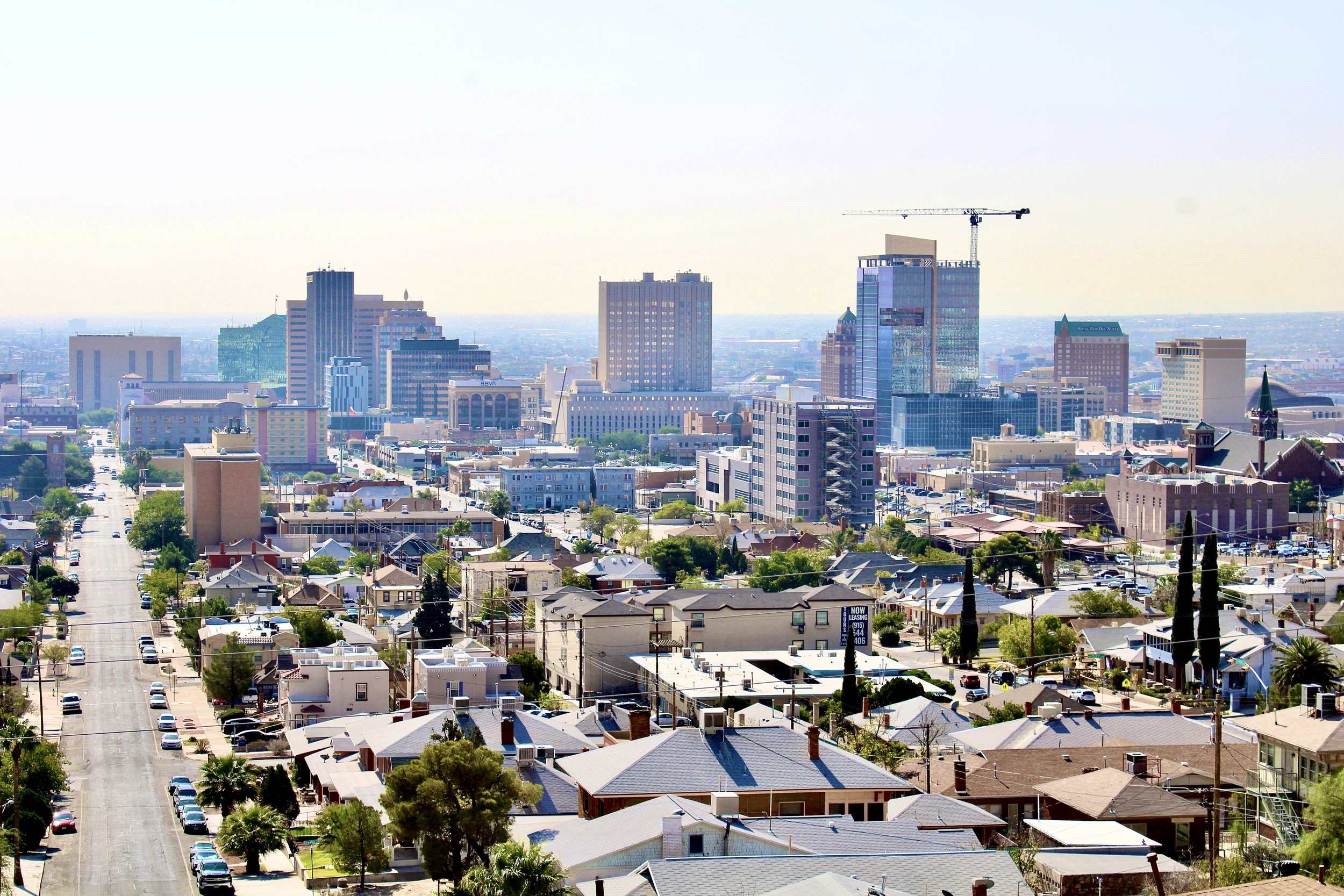
Complete Neighborhoods
In the fall of 2022, the City of El Paso launched an effort to complete targeted zoning code amendments to support the successful implementation of priority initiatives.
These initiatives represent recent and ongoing efforts by the City to encourage:
Diverse housing options
Mixed-use development
Reinvestment in the urban core where services exist
Identify and remove barriers to infill development within the zoning code
How we get there?
The proposed implementation strategy breaks the project into two tiers: “quick fixes” which are near term solutions and new tools which we anticipate will be developed later in the process.
Tier 1: Targeted Code Amendments (“Quick Fixes”)
Address commonly cited issues that are expected to have broad support
Quick fixes that can be used to “test” new concepts or enhanced tools
-
Offer flexibility on dimensional standards, such as setbacks, parking configurations, and others.
Remove minimum parking requirements for multi-family residential.
Establish standards for trash storage and collection.
Establish residential adjacency standards to address uses, noise, lighting, and more.
-
Remove barriers to development so homeowners can transform their garage into an apartment or their home into a duplex, as an example. This will then create varying types of housing within a neighborhood, supporting different income levels and housing needs.
Offer built-in flexibility on dimensional standards.
Make it easier for homeowners to develop accessory dwelling units, ADUs, on their property.
Allow missing middle housing, duplexes, triplexes, quads, by right in R-1 and R-2 zones. All full spectrum of missing middle housing in R-3 and R-4 zones.
Establish residential adjacency standards to address uses, noise, lighting, and more.
Remove minimum parking requirements for multifamily and missing-middle housing types.
-
Expand applicability of Adaptive Reuse Overlay incentives/streamline review and approvals
Bring greater predictability to the Neighborhood Conservation Overlay
Document opportunities for flexibility in Title 18
Facilitate the use of historic tax credits
Establish a tiered approach to nonconforming uses/buildings.
-
Update the sustainable landscaping requirements for infill development and require low water plantings.
Require storm-water best management practices by requiring the use of low impact development methods.
Encourage green building strategies
Limit the amount of land used for parking by establishing a parking maximum
-
Establish common open space requirements to increase open space opportunities in more urban contexts.
Establish minimum requirements for transit supported amenities such as shade, comfortable seating, bicycle parking, etc.
Require complete streets
Encourage neighborhood supportive uses, such as small markets, local shops, artist studios, etc.
Maintain the street tree spacing requirements
Tier 2: New Tools (“Longer-Term Efforts”)
More complex code updates and other changes that warrant more in-depth discussion
-
Establish new set of mixed-use zoning districts
Adopt standards to achieve higher quality architecture, site, and building design
Calibrate density/height bonuses for regulatory and financial incentives
Eliminate parking minimums for all other uses
-
Establish and adopt development prototypes to streamline approvals and design costs
Establish new traditional neighborhood zoning tools
-
Pursue anti-displacement strategies for historically disadvantaged or vulnerable communities
-
Establish a new standalone sustainability section in Title 20 that includes a menu of options.
-
Establish a new neighborhood mixed-use zoning district
Why are we making these changes
Over the last several years, Council has adopted various plans and policies which identified outcomes that are inconsistent with our existing code. With that as our reference point, we used these priority initiatives to inform changes to our Zoning Ordinance that promotes the type of development called for in these documents.
Complete Neighborhoods
The Complete Neighborhoods Zoning Reform Initiative is focused on implementing adopted priority initiatives by making targeted revisions to our Zoning Ordinance. The intent is to promote development that results in equitable outcomes for residents by making neighborhoods accessible to all. As indicated in the name, "Complete" neighborhoods provides contrast to those that are "incomplete". As demonstrated in the historical context documentation, many of the neighborhoods identified for changing zoning regulations have a history of exclusion. Through this effort, we aim to redress past harm on those residents negatively impacted by those restrictions.
Developing targeted zoning code amendments to facilitate the successful implementation of adopted plans and priority initiatives, with a specific focus on infill development, is a strategic approach to achieving our City’s goals.
Priority Initiatives
PROJECT THEMES
Facilitate denser, mixed-use development where supported by infrastructure and services
Diversify housing options in older neighborhoods
Encourage historic preservation and adaptive reuse
Expand the adoption of sustainable development practices
Promote safe, healthy, and livable neighborhoods
Project Details
Historical Context
Learn more about why this initiative is named “Complete Neighborhoods”
Code Assessment & Zoning Diagnostic
This document identifies challenges to implementing the priority initiatives with the existing Zoning Code as well as proposed revisions that will implement them"
Boundary Web Map
Use this link to see where the code changes are proposed





